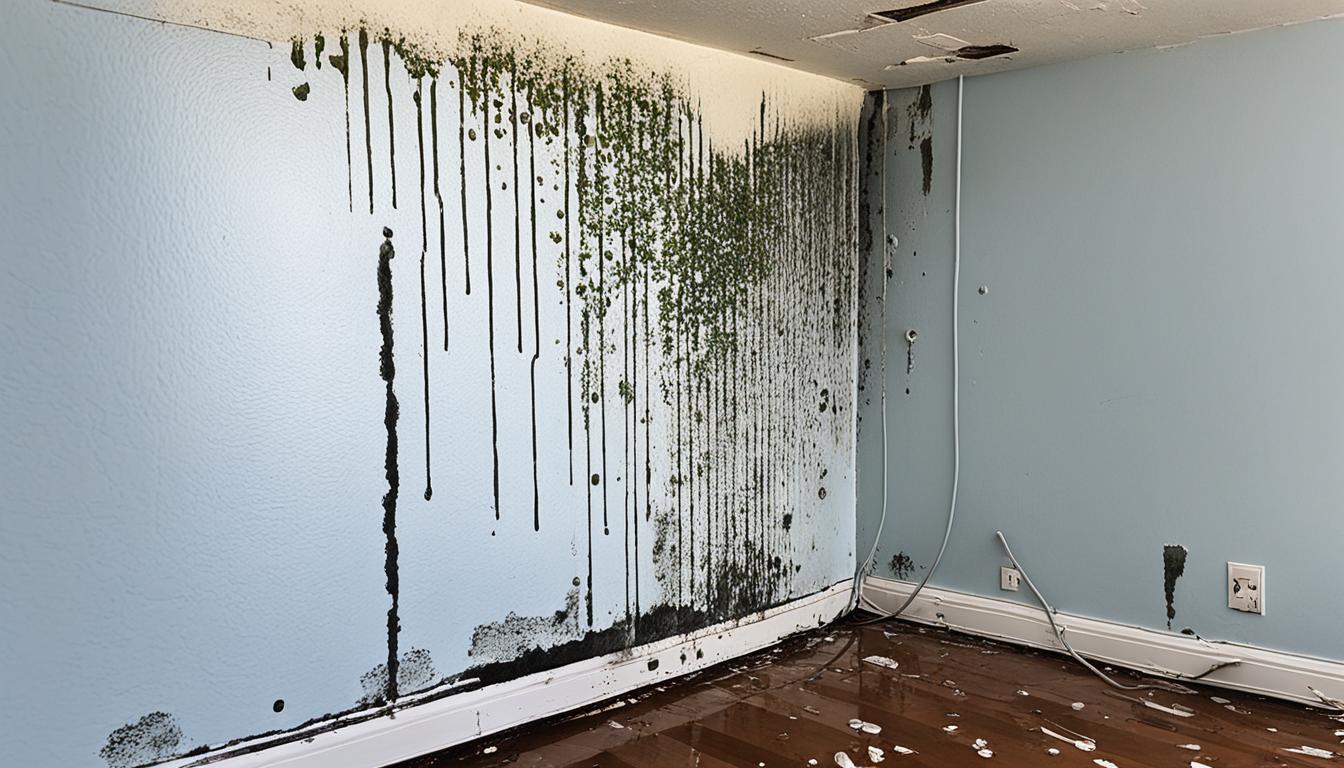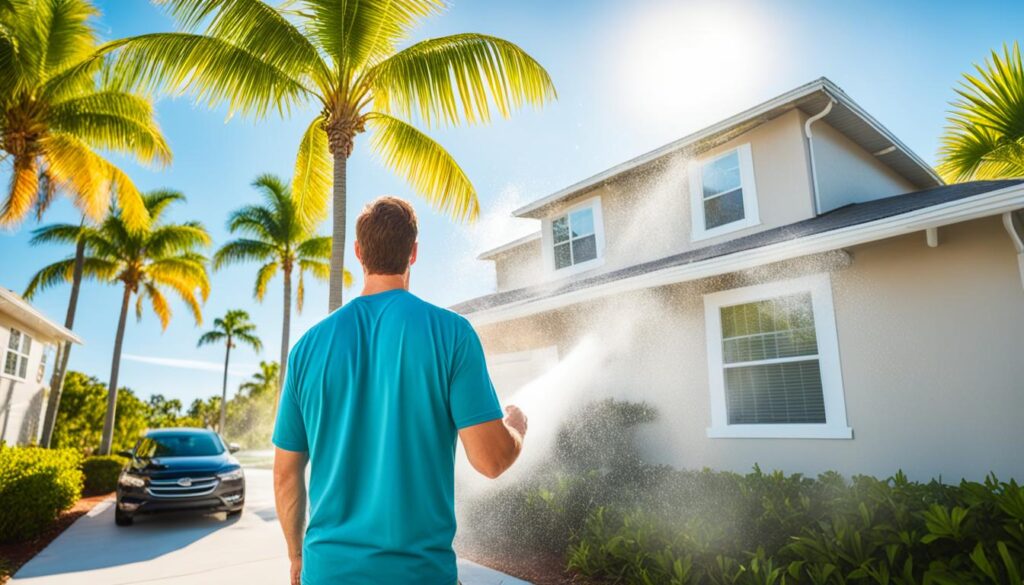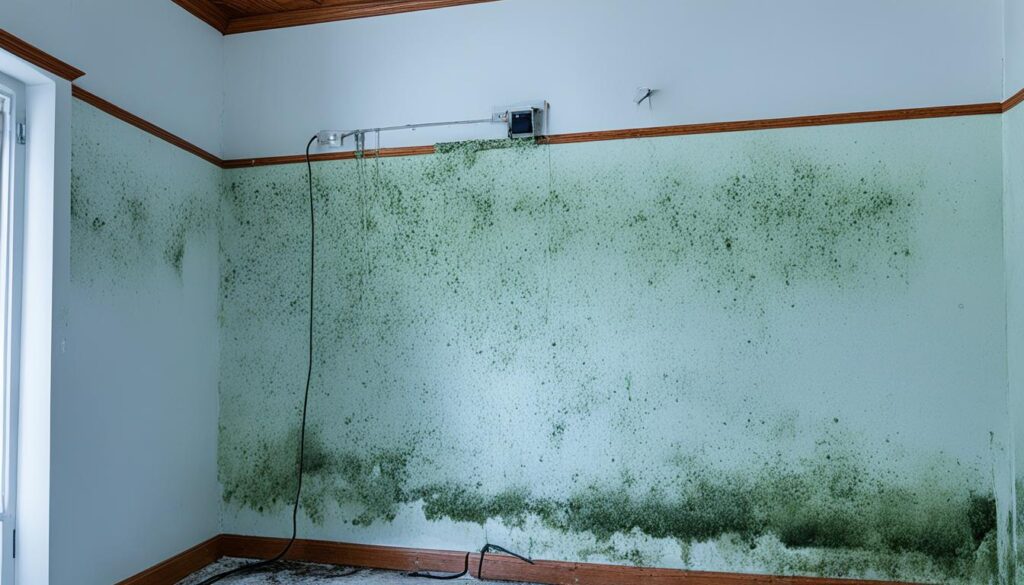
Water Damage and Mold in Florida: A Critical Link
Welcome to our informative article on the connection between water damage and mold in Florida. As a state known for its humid climate and frequent water-related issues, Florida faces unique challenges when it comes to the prevention and remediation of mold growth following water damage incidents.
Florida’s geographical location and subtropical climate make it susceptible to heavy rainfall, hurricanes, and high humidity levels. These conditions create an ideal breeding ground for mold, which can lead to significant property damage and pose health risks to occupants.
In this section, we will discuss the critical link between water damage and mold growth in Florida. We will explore the potential consequences of water damage and the increased risks of mold formation in this specific environment. By understanding the correlation between these two issues, property owners can take proactive measures to mitigate the damage caused by water intrusion and prevent mold growth.
Key Takeaways:
- Florida’s humid climate and frequent water-related incidents contribute to the increased risk of mold growth.
- Water damage can result in significant property damage and pose health risks to occupants.
- Preventing mold growth is crucial in Florida’s subtropical climate.
- Timely mitigation and restoration measures are essential to minimize the damage caused by water intrusion.
- Understanding the connection between water damage and mold growth is crucial for effective prevention and remediation.
Understanding Mold in Humid Climates
In humid climates, such as the state of Florida, understanding the characteristics and behavior of mold is essential to prevent its growth and mitigate its potential consequences. The high humidity levels and warm temperatures in these areas create an ideal environment for mold spores to thrive and reproduce, leading to widespread mold infestations if left unchecked.
Mold growth in humid climates is influenced by several factors, including:
- Excess moisture: High humidity levels in the air provide the necessary moisture for mold to grow. This moisture can come from various sources, such as leaky pipes, condensation, or water damage from flooding or storms.
- Lack of ventilation: Insufficient airflow and poor ventilation contribute to increased humidity levels in enclosed spaces, creating an optimal breeding ground for mold.
- Organic materials: Mold thrives on organic materials like wood, paper, and fabrics. If these materials are exposed to excessive moisture, mold spores can quickly colonize the surface and spread further.
Preventing mold growth in Florida’s humid climate requires proactive measures and prompt action. Effective strategies include:
- Maintaining proper ventilation: Ensuring adequate airflow and ventilation in buildings helps control humidity levels, reducing the risk of mold growth.
- Controlling moisture sources: Regularly inspecting and repairing any sources of moisture, such as leaky pipes or roofs, can prevent the conditions that foster mold growth.
- Reducing indoor humidity: Using dehumidifiers and air conditioners can help lower humidity levels, making the environment less favorable for mold spores to proliferate.
- Proper insulation: Insulating walls, floors, and windows can prevent condensation and moisture buildup, minimizing the chances of mold growth.
While preventive measures are crucial, it’s important to address mold growth promptly when it occurs. Mold remediation in humid environments like Florida should be conducted by professionals with expertise in the field. This ensures the thorough removal of mold colonies and the implementation of measures to prevent recurrence.
By understanding the nature of mold in humid climates, implementing preventive strategies, and seeking professional mold remediation services, individuals and property owners can effectively combat mold growth and maintain a safe and healthy environment.
Quote:
“Preventing mold growth in humid environments requires proactive measures and prompt action.”
An informative table on the types of mold commonly found in Florida:
| Type of Mold | Description |
|---|---|
| Penicillium | A common indoor mold that can cause allergies and respiratory issues. |
| Aspergillus | A mold that can produce mycotoxins and is often found in damp areas. |
| Stachybotrys | Also known as “black mold,” it can cause severe health problems and is commonly found in water-damaged buildings. |
| Cladosporium | A mold often found in areas with high moisture, such as bathrooms and basements. |
Image:

Water Damage Consequences and Prevention
Water damage can have severe consequences if not addressed promptly and effectively. In Florida, where the humid climate exacerbates the risks, understanding the potential damage caused by water intrusion is crucial. Taking the necessary steps for water damage restoration in Florida is essential for protecting your property and minimizing the associated risks.
The Consequences of Water Damage
When water infiltrates your home or business, it can result in significant structural damage and pose health risks. The consequences of water damage can include:
- Structural deterioration: Water can weaken the foundation, walls, and floors of a building, compromising its stability.
- Mold and mildew growth: Excess moisture creates an ideal environment for mold and mildew to thrive, leading to potential health hazards and further damage.
- Electrical hazards: Water infiltration can damage electrical systems, increasing the risk of fire or electrocution.
- Damage to belongings: Furniture, appliances, documents, and personal items can suffer irreparable damage due to water exposure.
Preventing Water Damage in Florida
While water damage can be devastating, there are preventive measures you can take to minimize the risk:
- Regular maintenance: Conduct routine inspections of your property, including the roof, plumbing systems, and gutters, to identify and address potential issues early.
- Proper drainage: Ensure that rainwater is effectively directed away from your property by maintaining and extending downspouts and grading the terrain accordingly.
- Sump pump installation: Consider installing a sump pump in your basement or low-lying areas to prevent water accumulation in case of flooding.
- Adequate insulation: Proper insulation can help prevent condensation and reduce the risk of water damage caused by temperature fluctuations.
- Regular appliance maintenance: Inspect and maintain appliances that use water, such as washing machines, dishwashers, and water heaters, to prevent leaks and malfunctions.
“Preventing water damage is a proactive approach that can save homeowners and businesses from the potential devastating consequences. Regular maintenance, proper drainage, and proactive measures can significantly reduce the risk.”
Water Damage Restoration in Florida
In the event of water damage, it is crucial to act quickly and engage professional water damage restoration services in Florida. Prompt mitigation and restoration efforts can help minimize the damage and prevent further complications.
Water damage restoration professionals have the expertise, equipment, and experience to effectively assess the extent of the damage, remove excess water and moisture, dry the affected areas, and restore your property to its pre-damage condition. They can also identify and address potential mold growth, ensuring a thorough restoration process.
By investing in water damage restoration services, you can expedite the recovery process, protect your property, and minimize the financial and emotional burden associated with water damage consequences.

The Link Between Water Damage and Mold Growth
Water damage and mold growth in Florida are interconnected issues that can have severe consequences for homeowners and property owners alike. When water damage occurs, whether due to a burst pipe, roof leak, or flood, it creates an ideal environment for mold to flourish.
The warm and humid climate of Florida provides the perfect breeding ground for mold spores to thrive and multiply rapidly. Moisture from water damage combined with the high humidity levels creates the ideal conditions for mold growth. As the water sits and stagnates, mold spores present in the air settle and begin to colonize the damp surfaces.
Common areas where mold can develop after water damage include basements, attics, bathrooms, and any other spaces susceptible to water intrusion. Mold can hide behind walls, under carpets, and in areas that are not immediately visible, making it crucial to address both water damage and potential mold growth thoroughly.
To tackle this issue effectively, it is essential to address water damage promptly and engage professional water damage restoration services. Proper drying techniques should be employed to eliminate excess moisture and prevent mold growth. Additionally, thorough mold remediation is crucial to ensure that all mold colonies are removed, and the affected areas are cleaned and treated to prevent recurrence.




